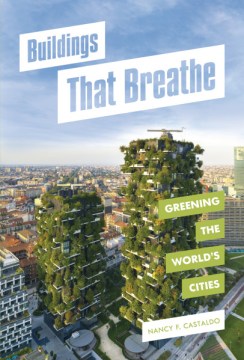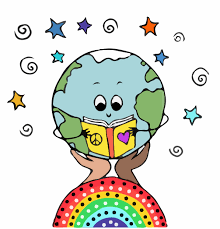 Welcome to STEM Tuesday: Author Interview, a repeating feature for the last Tuesday of every month. Go Science-Tech-Engineering-Math!
Welcome to STEM Tuesday: Author Interview, a repeating feature for the last Tuesday of every month. Go Science-Tech-Engineering-Math!
Today, I’m delighted to interview a founding member of STEM Tuesday, Nancy Castaldo!
Nancy’s most recent book is an exploration of a very cool topic – green buildings! And not painted green. No, these buildings are growing, thriving, and . . . breathing!
BUILDINGS THAT BREATHE: GREENING THE WORLD’S CITIES takes young readers on a journey around the world to discover ecological, sustainable architecture practices such as incorporating trees and other forms of native vegetation into buildings.
Why design buildings that breathe? Because it’s healthier – for humans, wildlife, and the planet. And, these buildings are beautiful!
Learn more about Nancy’s research and writing process:

Andi Diehn: What a great title – what sparked the idea for this book?
Nancy Castaldo: As an Italian-American, I have Italian news stories on my radar. I was excited when I came across the story of Bosco Verticale in Milan. In addition, I studied architecture in graduate school after all my earlier science studies. This project dovetailed with both of those interests. I wasn’t sure what direction the book would take until I attended the United Nations Forum in Urban Forestry in Mantua, Italy in 2018. The book formed out of that participation. I had the opportunity to meet with so many global leaders in urban greening.
AD: Boeri refers to a “new Renaissance” when talking about the future of cities. What does he mean by this?
NC: The Italian Renaissance was a period of recovery from disasters that occurred in the 14th century and a period of tremendous innovation. Milan was home to Leonardo da Vinci, a Renaissance master of innovation. Boeri, the architect for Bosco Verticale, is calling for the opportunity for tremendous innovation in the world’s cities today. His design and his collaborations in Milan and elsewhere are at the forefront of that innovation.
AD: The story of Seneca Village was fascinating – why is it important to remember the people who lived there before the land became Central Park?
NC: Seneca Village and the dissolution of it is important to everyone everywhere. It is an historical example of social injustice that went on and that still occurs in gentrification projects. The residents of Seneca Village that were displaced had their lives disrupted just as many still do today.
 AD: Boeri’s vision of a building that incorporates trees and essentially becomes one great tree that “incidentally houses humans” is a real shift from our traditional way of thinking of architecture as serving humans—these buildings serve the land. Why do you think that shift is happening now?
AD: Boeri’s vision of a building that incorporates trees and essentially becomes one great tree that “incidentally houses humans” is a real shift from our traditional way of thinking of architecture as serving humans—these buildings serve the land. Why do you think that shift is happening now?
NC: Cities need to be made more livable for residents and healthier for our planet. Urban greening projects do both. The shift is important to combat human-caused climate change that damages our planet and individual health. Cities produce three-quarters of carbon dioxide emissions along with many other pollutants. As city populations increase, so do those emissions. We can do better. Urban greening is one big tool in our toolbox.
AD: You write about Boeri’s team members and their backgrounds, including Laura Gatti and Emanuela Borio. Is it important to have many voices contributing to the plans? Why?
NC: Everyone has their own specialties in creating such extraordinary, innovative designs. All contribute to the project’s success. I’m hoping that young readers, of all genders, will find inspiration from these individuals in STEM careers.
AD: I had no idea that growing trees and bushes on buildings was so complicated! What are some of the things the designers have to consider?
NC: The book describes how the team had to deal with issues of wind and weight on the structure and its trees. When groundbreaking projects like Bosco Verticale are constructed, lessons can be learned for all buildings going forward.
AD: In March, the Intergovernmental Panel on Climate Change announced that we’d be crossing a critical global warming threshold in the 2030s if we didn’t make major changes—how do books like yours help younger generations understand the climate situation?
NC: I hope that Buildings That Breathe can not only inform my readers but inspire them to think about other creative solutions to our global climate crisis. I’ve included ways readers can also get involved in their own communities throughout the book and in the backmatter.
AD: I love the idea of making our living spaces more welcoming to wildlife and birds. How do we balance the benefits of living near and among animals with the possible risks?
NC: Coming to the realization that humans and wildlife are all sharing the same spaces on the planet is the first step. Respecting those creatures that inhabit our world comes next. Learning how to live with wildlife can be a fulfilling and a healthy way to enhance our lives. Do your homework. Think of things like adding bird feeders and native plants to yards and terraces.
AD: I like how you discuss modern innovations alongside ancient technology like sod roofs. What can we learn from looking at old ways of doing things?

NC: If it isn’t broke, don’t fix it. That old adage is often true. A look back at traditional solutions might inspire how we develop new ideas, like green roofs.
AD: I love the story about people celebrating rooftop gardens and posting their pictures to social media. Why is this kind of connection an important part of combatting climate change?
NC: Good news should be spread, don’t you think? It’s one of the best uses of social media. Let’s hope it will inspire action and change.
AD: You include a discussion of pros and cons in most chapters – why is it important to look at innovations from all different sides?
NC: All voices need to be heard. In that way, solutions can be addressed. Everyone’s voice matters. And we all know that “there is no free lunch.” Solutions are not always 100% risk free. We should acknowledge that and attempt to make the best decisions going forward to mitigate any problems.
AD: I like that you discuss green architecture happening in lower-income areas, and the problem of eco-gentrification. How are innovators addressing the need to reach all populations, not just the wealthy? How might they work with existing neighbors to ensure no one is forced out of their home for the sake of green building?
NC: This is a huge topic, but one that needs to be addressed. I included it because all stakeholders in urban projects need to be considered. Sadly, not all city neighborhoods have the same amount of parks and greenery. More parks are needed to even this out and create healthy places for all city residents. In addition, residents who suffer from eco-gentrification projects need to have their voices heard and their properties considered. Suggestions for how readers can attend public forums and ways to turn your community green are included in Buildings That Breathe.
Nancy Castaldo has written award-winning books about our planet for over 20 years from New York’s Hudson Valley. Her love of reading and writing outdoors began in her childhood, when she wasn’t searching for frogs, turtles, and salamanders, and climbing trees. Her curiosity led her to study science. As an environmental educator, Nancy combined all of those interests. She still enjoys spending her time exploring in the wild as she did while researching over two dozen books and many articles.
***
Andi Diehn grew up near the ocean chatting with horseshoe crabs and now lives in the mountains surrounded by dogs, cats, lizards, chickens, ducks, moose, deer, and bobcats, some of which help themselves to whatever she manages to grow in the garden. You are most likely to find her reading a book, talking about books, writing a book, or discussing politics with her sons. She has 18 children’s books published or forthcoming.


 About the Book
About the Book

 I have a ton of info and details about my books, the research I’ve done, my family/dogs/favorite things, and author visits on my website –
I have a ton of info and details about my books, the research I’ve done, my family/dogs/favorite things, and author visits on my website –  Today, I’m bubbling over with excitement to chat with Mixed-Up Files contributor Heather Murphy Capps about her middle-grade debut, Indigo & Ida. Hailed by Kirkus as “… A satisfying story that demonstrates how the past can shed light on the present,” and by author Chad Lucas as “brimming with passion on every page,” the novel–which earned a star from Booklist–is out now from Carolrhoda Books/Lerner. Want a chance to win a copy? Details below! 👇
Today, I’m bubbling over with excitement to chat with Mixed-Up Files contributor Heather Murphy Capps about her middle-grade debut, Indigo & Ida. Hailed by Kirkus as “… A satisfying story that demonstrates how the past can shed light on the present,” and by author Chad Lucas as “brimming with passion on every page,” the novel–which earned a star from Booklist–is out now from Carolrhoda Books/Lerner. Want a chance to win a copy? Details below! 👇













